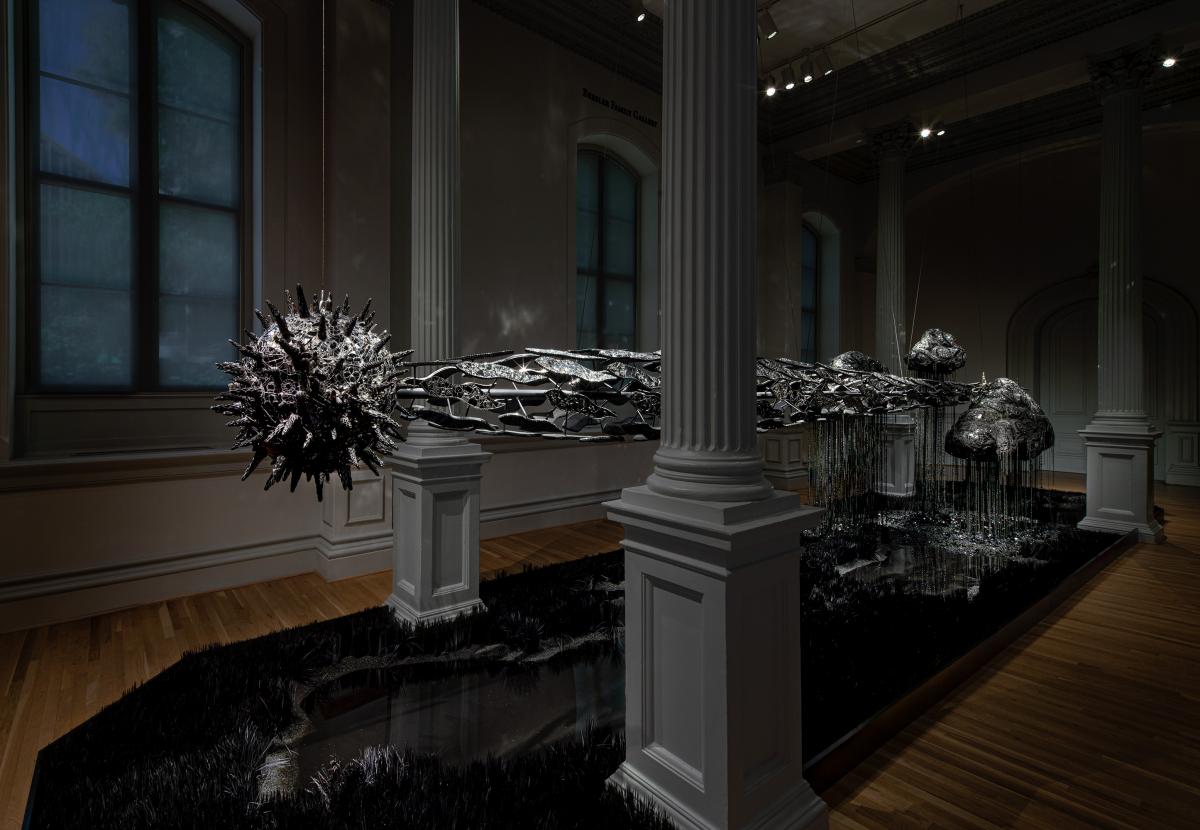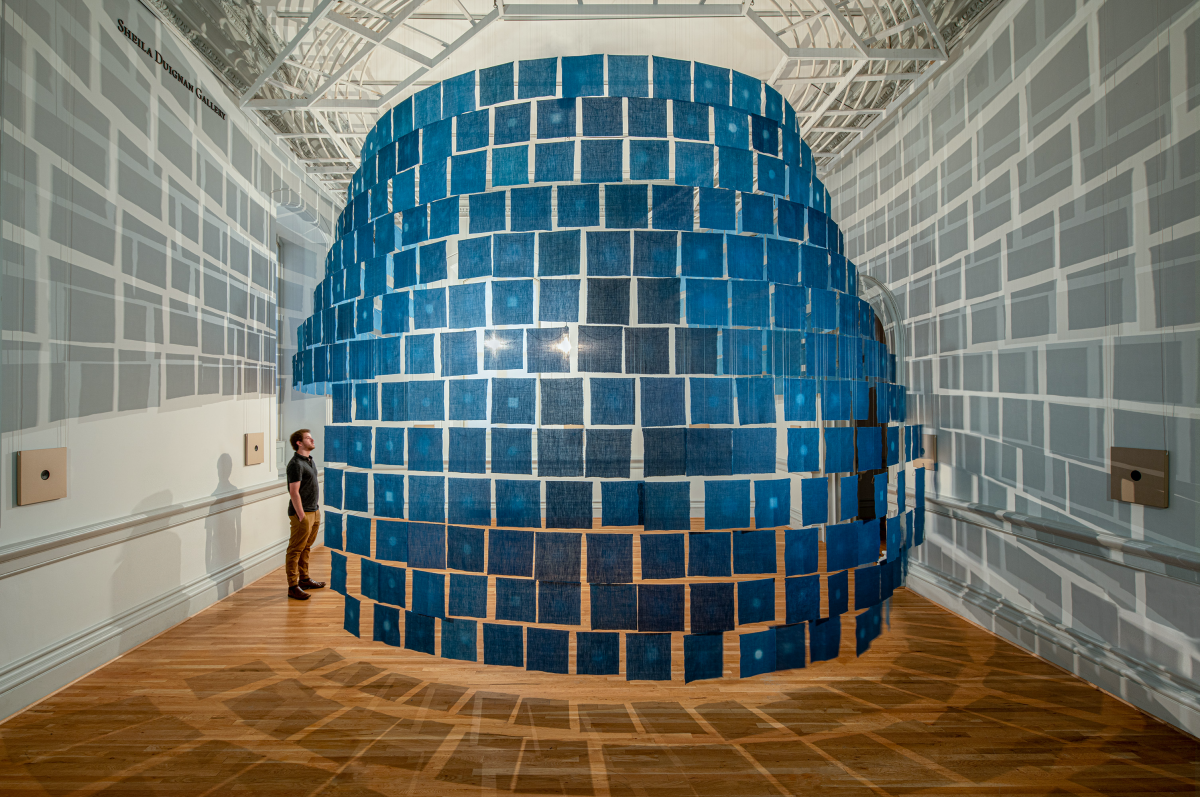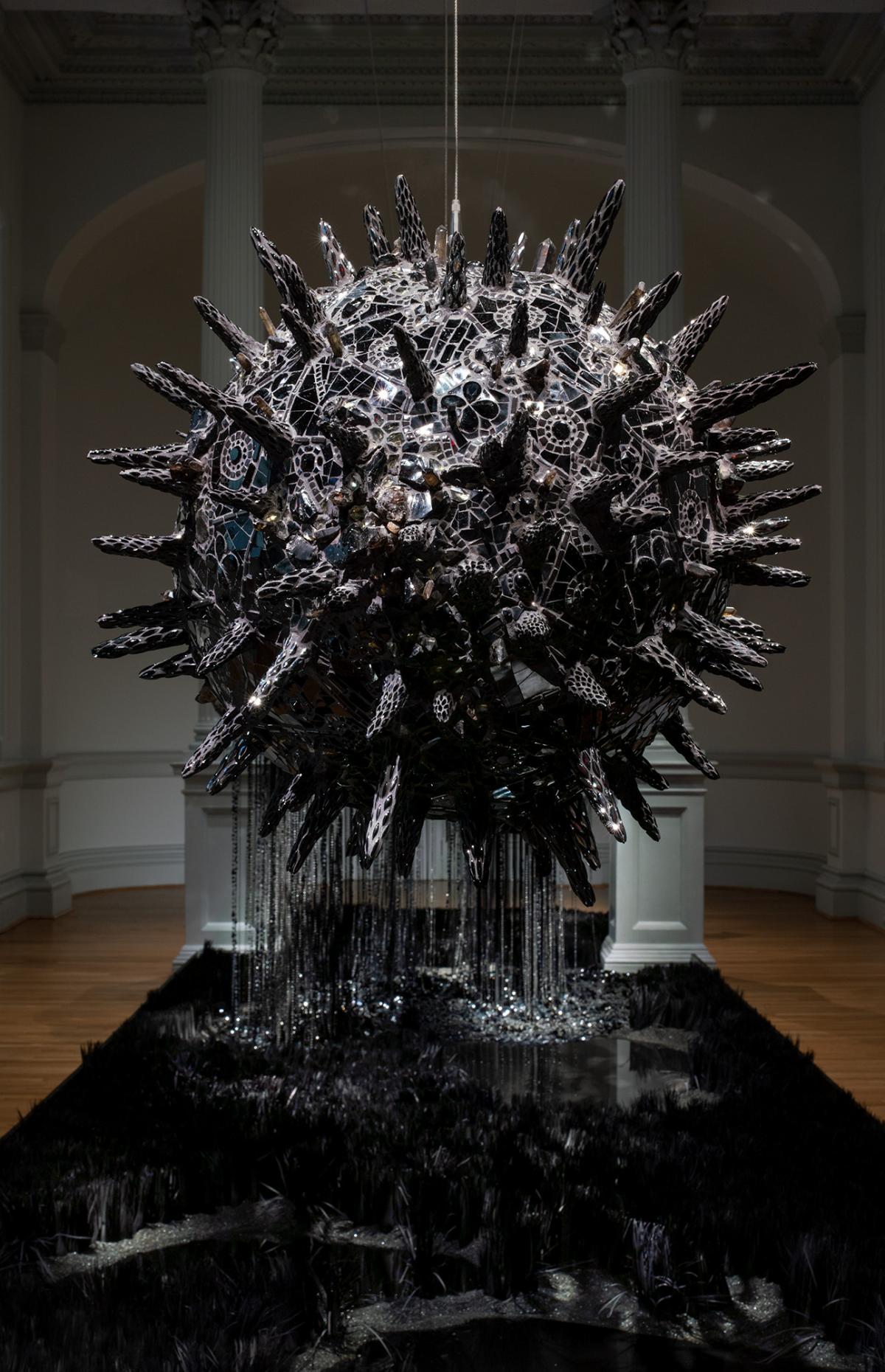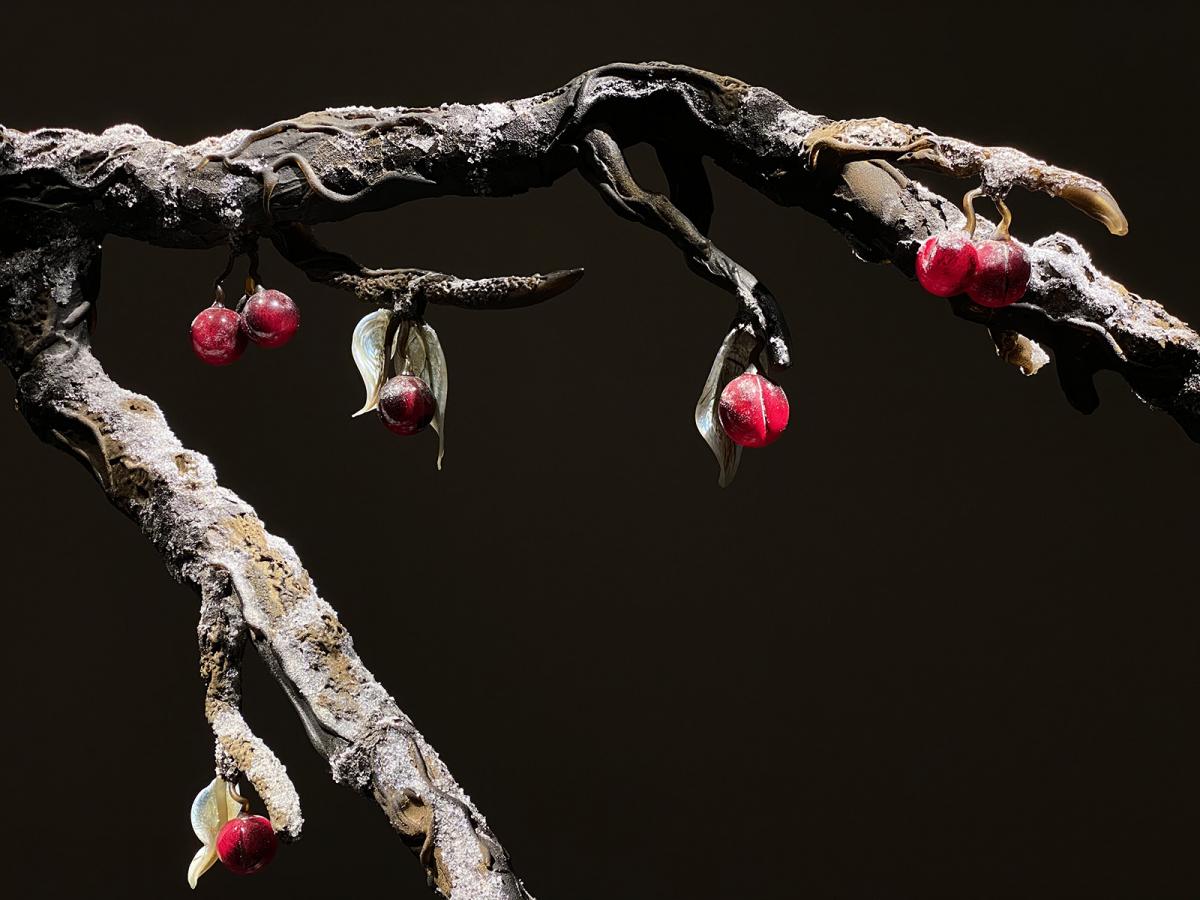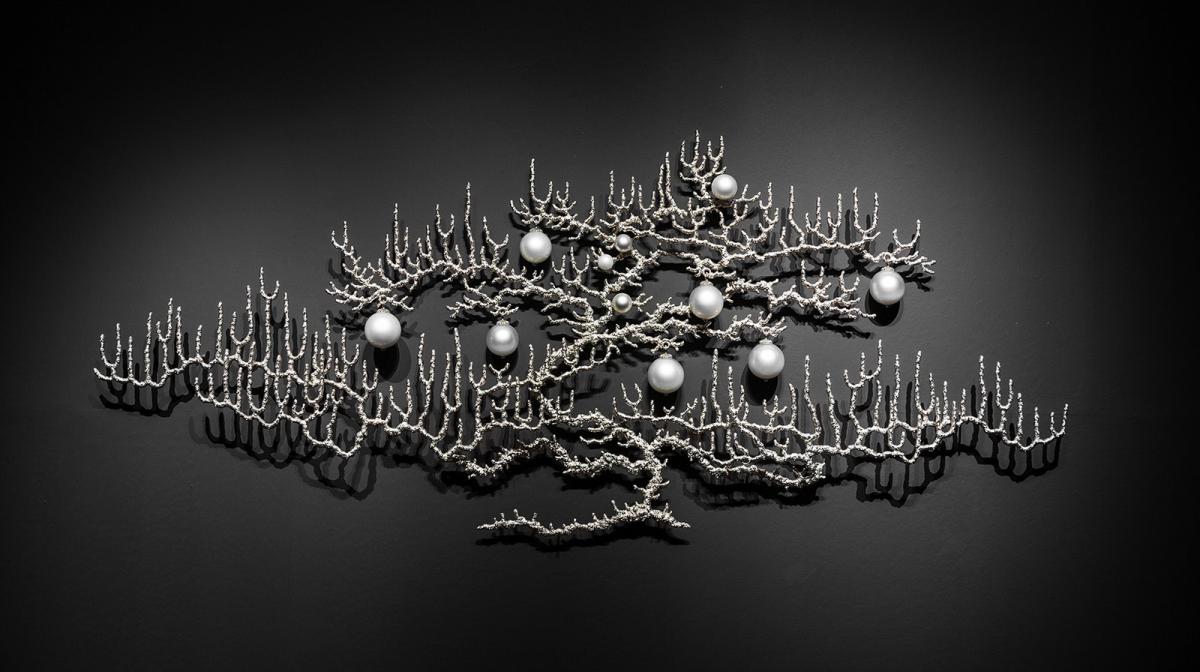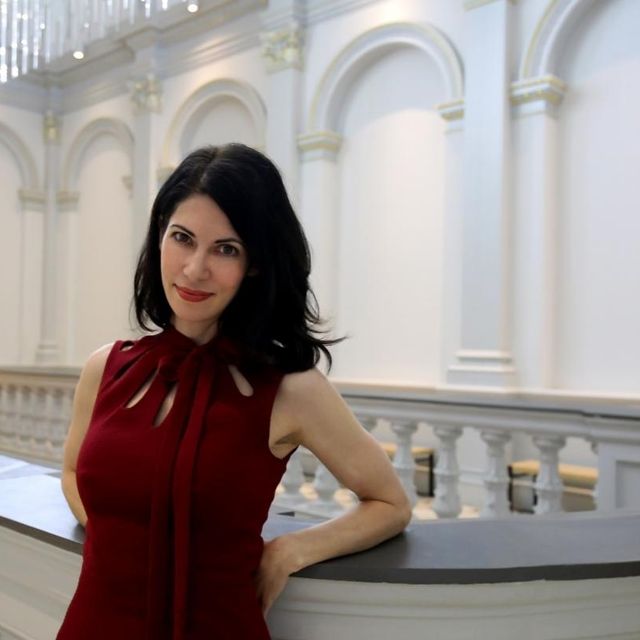
Time and again over the past year and a half, I have returned to the inspiring words of 17th Japanese poet Mizuta Masahide, “Barn's Burnt Down -- Now I Can See the Moon,” a reminder that even in our darkest hours, there is often a silver lining, the ability to see a beauty that was otherwise obfuscated from us, if only we choose to see.
To me, despite the darkness of the museum's galleries from November 23, 2020, to May 13, 2021, as the Renwick weathered the COVID-19 pandemic, the artworks in Forces of Nature: Renwick Invitational 2020 cast a warm glow like the moon over this new landscape, and have felt strangely suited to our time, though we never could have predicted the events of the last year and a half.
Those familiar with museum practice, of course, know every exhibition and catalogue is months, if not years, in the making. So like countless other museum shows worldwide when Forces of Nature: Renwick Invitational 2020 was slated to open during the pandemic, there was no changing course: the jury panel had long since taken place, the themes, participants, and works already selected, the essays written. One can easily imagine this scenario going hopelessly awry, out of tune with current events. Yet as we considered the impact of lockdown and the social unrest that had broken out all over the nation, we had a great deal of logistical work to reimagine, but notably, not content: astonishingly, the themes selected for Forces of Nature: Renwick Invitational 2020 seemed not to suffer, but become richer and more salient in these tumultuous times. It is perhaps a testament not only to the timeliness and the brilliance of these artists but also to craft's ability to illuminate and offer perspective on even the most challenging moments. In short, an incredibly reflective exhibition became more so, a moment to take a pause from the news cycles and absorb the quiet beauty of these artists’ work while considering the precarious state of the world.
In early 2019, I met with Emily Zilber, guest curator for the Invitational and director of curatorial affairs and strategic partnerships at the Wharton Esherick Museum in Malvern, Pennsylvania, and Stefano Catalani, executive director of the Gage Academy of Art in Seattle, to select artists and begin planning for the exhibition. We settled quickly on four talented artists Lauren Fensterstock, Timothy Horn, Debora Moore, and Rowland Ricketts, all addressing, from different perspectives, many of the challenges of our era, not head on, but through the stalwart beauty and fragility of nature. Each has a deep interest in the ways humans find meaning in the natural world, as well as a keen understanding that both nature and art are capable of reframing perspectives and offering moments of release. Individually, these artists explore these themes using wildly different materials, techniques, and installation formats.
We found ourselves walking many new paths in the production of Forces of Nature including, coordinating installation timelines and schedules based on quarantine needs, test results, and interstate travel restrictions; developing modes of virtual couriering and installation to minimize the number of people onsite (even performing our first “virtual” artist installation!); scrapping plans for an education space with touch-pieces and books to peruse; and reconfiguring virtual versions of in-person experiences, including the opening event and conversations with each of the artists. But while we changed many of our modes of operating behind the scenes, the in-gallery experience of the show did not change significantly and was perhaps enhanced by the world around us.
By curatorial intention, Forces of Nature focuses on just a few works from each artist – and in some cases, just a single large-scale, site-specific piece providing an immersive, meditative, and powerful experience for visitors. From a practical standpoint, this structure provided natural social distancing in the galleries and the unexpected benefit of contemplative space often not afforded by our usual crowds.
The pandemic also opened up new perspectives on the exhibition's content. Fensterstock's site-specific work The totality of time lusters the dusk, made in 2020, is her first piece in a new series looking at the metaphorical capacity of weather and celestial activity. She constructed rain clouds and an ominous comet above a dark garden, setting each blade of paper grass or glittering black piece of obsidian, glass, and crystal by hand. This landscape reflects research into how weather has been interpreted as a sign of divine intervention or used in various eschatologies (theories of the end of the world) across a variety of cultures. Fensterstock's installation is set within a series of white columns and becomes a space to confront nature's capacity for otherworldly beauty, alongside our inability to fully control it. During the construction of this work, Fensterstock herself noted how her “comet” became reminiscent of the virus, adding an ominous contemporary layer onto its appearance.
For the past two decades, indigo has been Ricketts' primary medium and subject matter. Ai no Keshiki – Indigo Views, a work created in Japan, was adapted to the Renwick's galleries for this exhibition. It consists of 450 blue cloths, each faded by exposure, which become an arched curtain that, like Fensterstock’s work, brings to mind natural cycles of change and time. They are accompanied by a soundscape developed by Ricketts' longtime collaborator Norbert Herber, a musician, and sound artist. Music is generated in real-time in the galleries, using individual shades of blue to guide each tone. Inspired by this format, the Renwick design team worked with Ricketts in the first months of the pandemic to develop a lighting program that shifts in real-time to respond to new global, national and local COVID-19 statistics. These collaborative elements deepen the work's exploration of beauty in the face of uncertainty.
Moore's tour-de-force Arboria is a human-scaled suite of glass trees. These remarkable objects emerge from large, natural stones and culminate in intricately rendered flora. They are full of beauty in contradiction: both strong and fragile, natural and fabricated, technically astonishing and seemingly effortless. Moore intended Arboria to offer room for respite and meditation, and our need for this reflective space seems even more critical as the pandemic rages. Strolling in the galleries these past several months, I was reminded of Moore's own strength and resilience: in the process of making this series, one of the works, Winter Plum, crashed to the ground and shattered. In viewing this triumphant work, though, you would never know the artist was forced to pick up the pieces and start again.
Finally, Horn's gallery offers a similarly transcendent experience. His hybrid wall works link lichen and coral to baroque adornment and opulent blown-glass pearls, showing where nature and culture meet. We see the artistry and resilience of the natural world even as it is manipulated by human hands, with pieces from his Gorgonia series reflecting on the devastation of undersea environments through climate change and events such as the Fukushima nuclear disaster. Interestingly, Janet Echelman’s 1.8 Renwick, on view in the Rubenstein Grand Salon, provides another reflection on the earthquake that caused that disaster.
As the exhibition comes to a close, I am sorry so few visitors had an opportunity to see these tremendous works in person in the galleries, which became an ideal space for meditation and contemplation, with wide spaces and darkened, theatrical lighting illuminating brilliantly crafted works of sheer awe. But one silver lining, akin to the image of the moon in Masahide's poem, is that it has shown us a way to capture the beauty and thought of our exhibitions for current national and international audiences through increased digital programming. Long after the physical exhibition has closed, these important resources will be available online.














